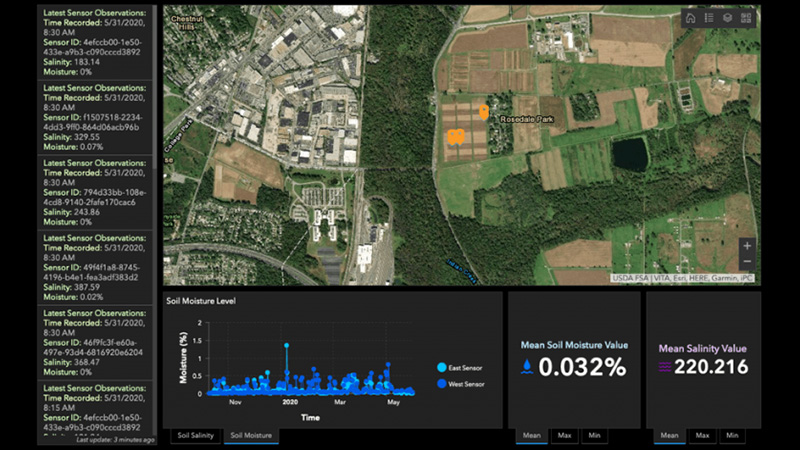A New Cycle For Fertilizer Demand
Since the end of 2009, the fertilizer market has enjoyed great success in terms of demand from grower-customers. But because of a series of marketplace trends, this high growth cycle could be slowing down significantly in 2014.
This was the overall message delivered to attendees at the recent Fertilizer Outlook & Technology Conference, held this past November in Tampa, FL, and co-sponsored by The Fertilizer Institute and the Fertilizer Industry Round Table. Speakers at the event warned that several years of prosperity — particularly in the corn market — have helped boost overall fertilizer demand, but now might be in for some major changes as the 2014 season gets underway.
Before looking forward, however, a look back is in order. Starting in 2010, the nation’s (and world’s) demand for corn has been on a cycle of steady increases. Driven in part by the EPA’s ethanol blend requirement, growers have planted more corn each season since that time, topping 96 million acres in 2013. Better still for the market, the nation’s corn harvest has remained in step with overall demand because of uneven weather events (severe droughts followed by excessive rains). This has translated into corn commodity prices in the $7 per bushel range for much of the past three years. Furthermore, since corn requires lots of fertilizer to boost yields — and higher commodity prices have meant more money in grower pockets — ag retailers have benefited as well.
But the ag marketplace seems to be entering a new cycle. Despite two difficult weather years, market watchers report that the nation’s corn harvest in 2013 topped 14 billion bushels. This was more than enough to make corn demand and should for the first time in several years increase the nation’s carryover amount.
As a result, commodity prices for corn have been steadily dropping. From $6.79 per bushel during the middle of 2013, today’s corn prices are at $4.22 per bushel. “Commodity prices are down 20% to 40% from 2012,” said Rich Pottorff, chief economist for Doane Advisory Services. “This probably means farm income will take a hit as well, down approximately $5 billion in 2014.”
Tied To Ethanol
According to Pottorff, the reason for this decline in corn fortunes ties directly back to the one thing that has largely driven demand forward the past few years — ethanol. Beginning in 2010, the EPA has steadily increased its ethanol blend requirement for gasoline producers. This has boosted corn demand accordingly.
However, since 2012, gasoline consumption has been on the decline (134 billion gallons were consumed that year, say market insiders), increasingly pushing the ethanol requirement close to the “blend wall” — a level that gasoline producers say can’t be maintained with current consumer demand.
As originally written, says Pottorff, the ethanol blend mandate for 2013 was 13.8 billion gallons, increasing to 14.4 billion for 2014. But with the reduction in gasoline consumption taken into consideration, EPA has proposed reducing the ethanol blend mandate for 2014 to 13.2 billion gallons (although this change could end up being challenged in court).
“Let’s do the math then,” he said. “Right now, the biggest use for corn is feed, requiring 5.2 billion bushels. Ethanol is second at 4.9 billion bushels. Exports take up 1.7 billion bushels, with other uses for corn eating up the remaining 1.5 billion bushels. Put together, this means there will be demand for 13.3 billion bushels in 2014, which would translate into 88 million acres of planted corn. Right now, projections are there will be 92 million acres of corn planted in 2014, meaning we would need export demand to increase to 2.3 billion bushels to take up the surplus. Otherwise, there will be a lot of corn looking for a market at the end of 2014, which will undoubtedly push commodity prices down even further.”
Because of these factors, Pottorff predicted that corn production profits will get “very slim” in 2014, making growers more price conscious than they’ve been in several years. “They may cut back on some inputs,” he said. “The U.S. market for fertilizer, corn seed and pesticides is going to shrink — and probably pretty significantly. The bottom line is this: Ethanol growth for corn is largely at an end.”
The Nitrogen Impact
Obviously, nitrogen-based fertilizers could be most severely impacted by any disruption in the corn market. As Doug Hoadley, director of agri-business analysis for CF Industries, Inc., pointed out, corn accounted for 51% of nitrogen fertilizer usage during 2013. And if there are indeed 92 million acres of corn planted in 2014, nitrogen application rates should remain stable to slightly higher.
“Right now, we are anticipating nitrogen fertilizer demand next year to be 13.3 million tons, down approximately 0.7% from 2013,” said Hoadley. “Ammonia demand should be up 1.2% to 3.5 million tons, but we forecast urea and UAN demand to be down 5.4% to 3.7 million tons and 2.1% to 4 million tons, respectively.”
What could help boost these figures even further, he added, is the fact that natural gas prices have remained low. Another speaker, John Harpole, president of Mercator Energy, told attendees this indeed should be the case during 2014, thanks largely to the expansion of shale gas drilling operations. “Shale gas drilling has grown from 4% of natural gas production in the U.S. a few years ago to 42% today,” said Harpole. “Right now, I don’t see us ever getting above the $5 shelf for natural gas. Instead, prices will remain in the $3.50 to $4.75 range, which should encourage more investment in nitrogen fertilizer production.”
In addition to nitrogen fertilizer overall demand dropping slightly, phosphate demand is also expected to be off some during 2014. According to Mike Rahm, vice president market & strategic analysis for The Mosaic Co., the North American marketplace is projected to use 9.8 million tons of phosphate this year, down from 10.1 million tons used in 2013.
“This drop will mirror the drops taking place in the main commodities markets, which are down 40% from their 2011 peaks,” said Rahm. “We however are hoping this will be the phosphate market’s bottom and it will begin to recover in the coming years.”
Likewise, the potash market remains challenging for producers. According to Paul Burnside, principal consultant, potash for CRU International, the U.S. market for potash remains flat and likely won’t pick up during the new year. “The takeaway is that the U.S. crop mix could help potash demand, but probably won’t in 2014,” said Burnside. “The fall application rates for 2013 were better than in 2012, but below the 2011 rates.”
He further added that because end users of potash are buying on an as-needed basis, producer and ag retailer inventories have continued to climb, eroding prices in the process. “The current trend of capacity growth without demand growth is not sustainable,” warned Burnside.






